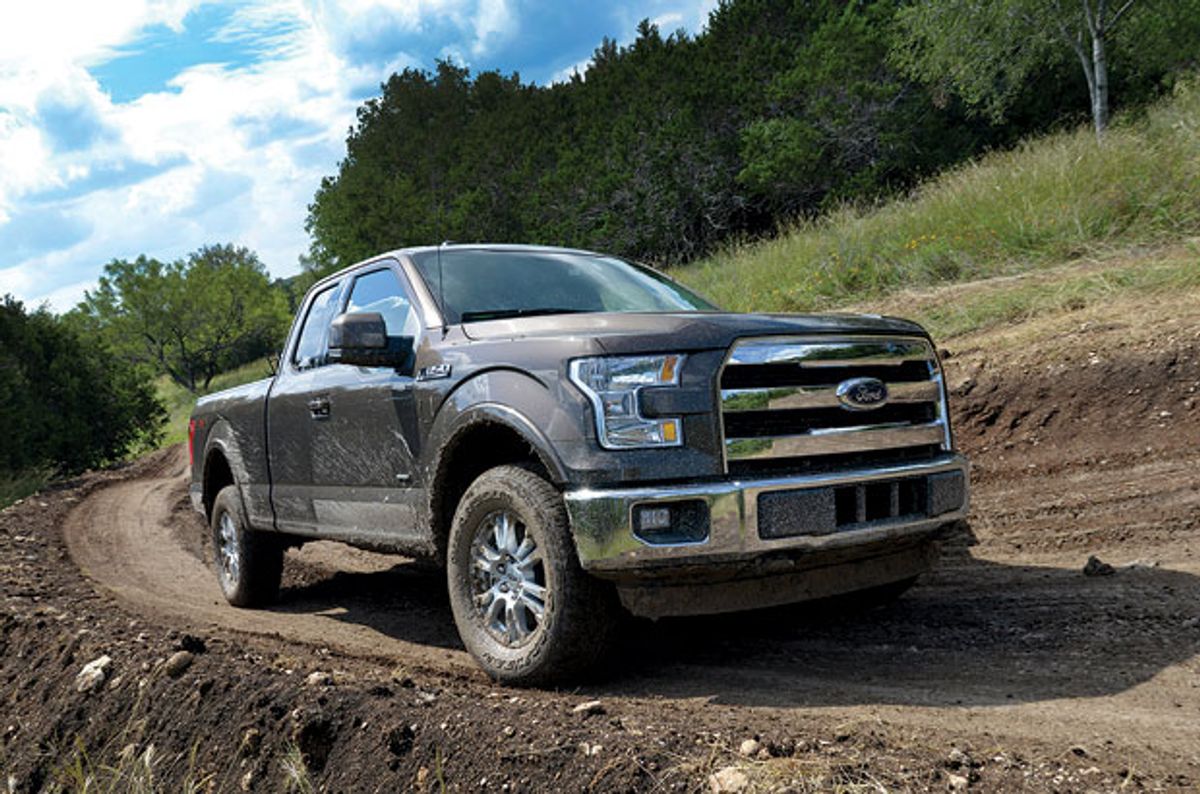2015's Top Ten Tech Cars: Ford F-Series
An aluminum truck for the masses

Video: Consumer Reports
Aluminum on a six-figure Aston Martin may be no big deal, but when it goes on the Ford F-Series pickup—America’s best-selling vehicle for 33 consecutive years—the world takes notice. The bodacious 2015 model must be considered one of the biggest product gambles in Ford’s history, being the product of a multibillion-dollar investment in Ford’s assembly lines, tooling, and engineering.
The F-150 has roughly 450 kilograms (1,000 pounds) of aluminum in its body, suspension, and other components, and it saves nearly 320 kg versus the outgoing model—a 15 percent loss. The switch from tried-and-true welded steel for an aluminum cab and cargo box alone saves 204 kg. Structural adhesives and about 4,000 rivets replace the roughly 7,000 spot welds of the old model, boosting rigidity.
Inside the engine compartment is another advance. It’s a pair of optional, twin-turbocharged EcoBoost V-6 engines. The smaller of the two wrings 242 kilowatts (325 horsepower) and 508 newton meters (375 foot-pounds) of torque from just 2.7 liters of displacement—the smallest engine in the truck’s 67-year history.
Price: US $26,220
Power train: 242-kW (325-hp) 2.7-L twin-turbo V-6
Overall fuel economy: 10.7 L/100 km (22 mpg)
Remember when pickups got 14 miles per gallon (16.8 liters per 100 kilometers) on the highway—with a strong tail wind? The 2.7-L F-Series is EPA rated at 26 mpg (9.0 L/100 km) on the highway, a record for a full-size gasoline pickup. The larger V-6 EcoBoost, at 272 kW (365 hp) and 3.5 L, cranks the Ford to 97 kilometers per hour (60 miles per hour) in an insane 5.6 seconds, with an equally remarkable absence of wind and road noise.
LED headlamps are another first for a pickup, with five times the life of ordinary incandescents. A bird’s-eye camera system provides 360-degree views around this tall, burly truck, and the Trailer Hitch Assist uses a camera and digital guides to help drivers back up toward a trailer. There’s even an optional active parking system that lets the Ford parallel park itself. The driving experience is also impressive: The mostly aluminum F-Series does feel lighter and more agile than its steel rivals. Other full-size Ford trucks, including the Expedition and Lincoln Navigator SUVs, will switch to aluminum bodies over the next three years.
Consider this F-Series the first giant leap on a scramble to 2025, when U.S.-market trucks like the F-150 must achieve 7.8 L/100 km (30 mpg) in overall fuel economy.